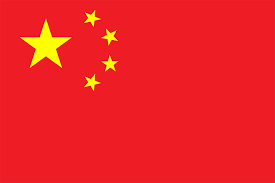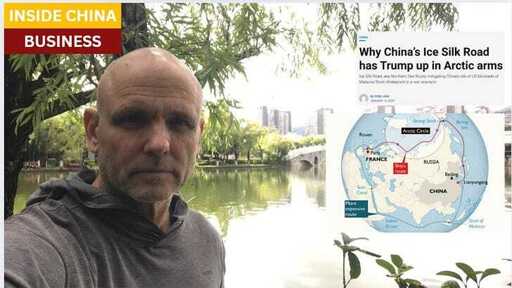cross-posted from: https://ibbit.at/post/88340
Bullets:
China and Russia are opening up new trading routes through the Arctic, saving shipping companies millions of dollars in fuel costs and crew time.
These efforts also mean huge gains in expertise in icebreaking, meteorology, climate research, mapping, and navigation.
The Arctic also contains vast amounts of energy and miners, mostly in the Russian north.
The Ice Silk Route is an important trade artery, providing both Russia and China a sanctions- and blockade-proof channel for energy and manufactured goods.
Western shipping firms believe that the Northern Route, mostly controlled by Russia, is too risky, irrespective of the cost savings or the geostrategic advantages.
This is a transcript, for the YouTube video here:
Report:
Good morning.
We reported previously, that Western airlines are not allowed to overfly Russia. That makes many of the routes for Europe and Asia much longer for airlines in the US and Europe, and puts our own airlines at a competitive disadvantage against Chinese airlines, among others.
These maps explain that problem. The flights just take longer, which means more fuel, more crew time, and more expense for passengers.
Russia is just enormous, and the same kind of geopolitics—and economics—that we’re seeing in commercial aviation since the Ukraine War began is kicking off in commercial shipping. Countries most friendly to Russia are opening up Arctic Ocean sea routes, and cutting thousands of miles and millions of dollars off their transit times and costs.
China and Russia are working closely together on a project called the Ice Silk Road, or a Northern Sea Route. This is from a Chinese wire, and includes details of the meetings between Russia and China to get these passages open to Chinese maritime traffic. They note here that the Malacca Strait is a key chokepoint for global shipping, and if the United States Navy were to block the Strait, it would be tantamount to an economic embargo against China. It would pose a lot of problems for outbound commercial shipping, and also for China’s energy imports.
The Northern Route serves as another way out, and in. This top-down map shows Chinese Commercial and Mining activity in the Arctic, and how the Polar Silk Road brings it all closer together.
There are deep advantages to China and Russia, as this develops. Over a decade ago, in 2013, a commercial ship went from Dalian to Rotterdam, and the trip took 33 days, a third less than going around. Besides the time savings, the Northern Route avoids the hazards of going through the Suez, such as the risk of terrorism or piracy.
The Arctic Ocean is bounded by just a handful of countries—Canada, The United States, and Russia, primarily, and in terms of length, Russia is most of it. It’s obvious that this shipping route offers deep advantages to commercial shipping, but mostly for China and Russia themselves.
Western ship operators are aware of these also, but ironically for them the Ice Silk Road is more risky. Russia controls that route, and after Western countries seized billions of dollars’ worth of Russian foreign currency reserves, shipping companies don’t want the risk of their multimillion dollars ships at the mercy of Russian icebreakers or Russian banking regulators. So no matter what good things are happening for Chinese shippers, the others will stay away.
And that’s a huge advantage, again, to Chinese companies who are using it. This analyst with the Australian Strategic Policy Institute says that it’s a new global economic corridor. It’s “a gamechanger”. Now it’s 2025, and the crews have learned a lot since the first trip back in 2013. The voyage now takes half the time as it does, to go around. So they are gaining a lot of expertise in how to conduct shipping operations in the Arctic. If it can be done safely, it can also be done economically, and China and Russia believe they’re solving both at the same time.
Rosatom is the Russian state nuclear energy company, and they forecast a 50% rise in transits this year. Moscow says that route is safer because it goes around the EU entirely. Last year 38 million tons were shipped, and as of this year Russia has received navigation permit applications for 196 sailings, even including from ship operators in Azerbaijan. There is a five-month window from 1 July through the end of November.
In September, the trip was made in just 18 days by a Chinese shipping company going from Ningbo to England. That’s faster than the railroad, at 25 days, the Suez Canal at 40 days, and 50 days for sailing around Africa. European companies using Chinese ships to deliver Chinese-built products, going through the Northern Route, see lower costs on shipping, and a reduction in their inventory costs.
There are some obvious benefits to Chinese commercial shippers, and their customers in Europe. But the geostrategic elements are much more important. The Arctic region contains vast amounts of natural resources, including metals and energy. The countries that develop the expertise the fastest, the mapping, the navigation, the icebreaking, the extraction, and the logistics in and out—will enjoy advantages that endure for decades, centuries. But Western companies aren’t interested.
Be Good.
Resources and links:
China launches world’s first Arctic express shipping route to Europe
https://safety4sea.com/china-launches-worlds-first-arctic-express-shipping-route-to-europe/
Russia expects 50% rise in Northern Sea Route transits
https://safety4sea.com/russia-expects-50-rise-in-northern-sea-route-transits/
This sea route has been dismissed as too treacherous. China’s taking the risk
https://edition.cnn.com/2025/10/03/climate/china-arctic-shipping-northern-sea-route
Why China’s Ice Silk Road has Trump up in Arctic arms
https://asiatimes.com/2025/01/why-chinas-ice-silk-road-has-trump-up-in-arctic-arms/
Arctic Frontier: Ice Silk Road and Its Role in China’s Advance to the Arctic
https://www.arcticandnorth.ru/upload/iblock/d4b/109/_122.pdf
中俄联手打通海上大动脉,美方才反应过来,马六甲格局要大变了
https://baijiahao.baidu.com/s?id=1816935961227105586
Chinese airlines grab market share from US and European carriers who have to fly around Russia
Flight maps from Great Circle Maps www.greatcirclemap.com) and Reuters, Unfriendly skies: How Russia’s invasion of Ukraine is redrawing air routes
https://www.reuters.com/graphics/UKRAINE-CRISIS/AIRLINES/klpykbmropg/
Visual Capitalist, The Energy and Mineral Riches of the Arctic
https://www.visualcapitalist.com/energy-and-mineral-riches-of-the-arctic/
Natural Resources in the Arctic, infographic
Loading Pinterest Pin…
From Inside China / Business via this RSS feed







I’m a little stoned and I thought this had something to do with the American Gestapo and/or the website where you could buy drugs
Isn’t ice slang for meth?
Haha that’s where my mind first went too